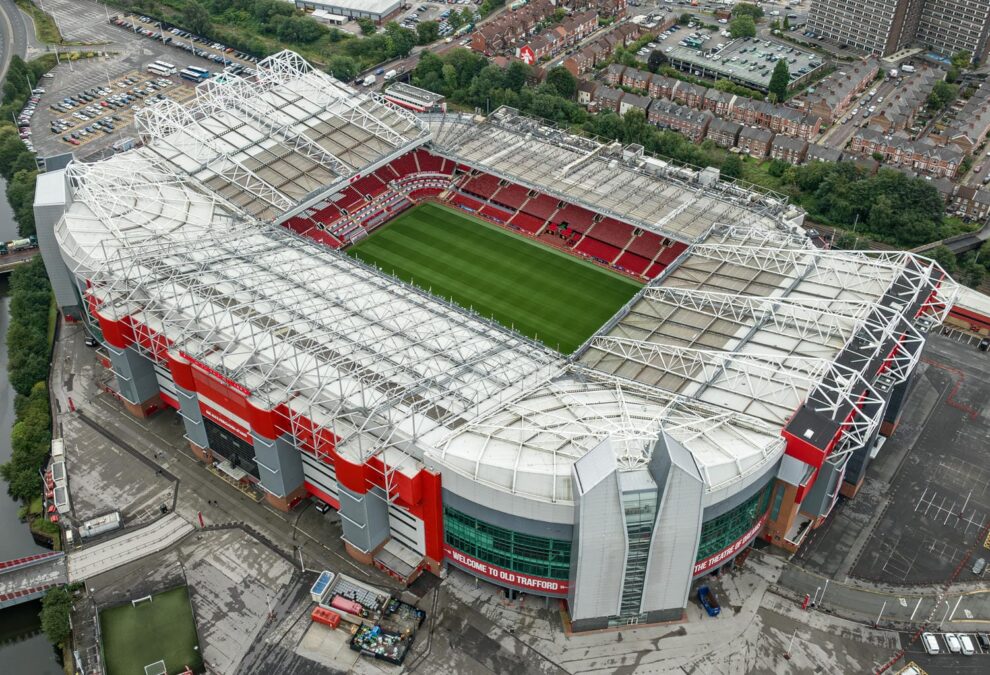Manchester United’s bold vision to rebuild Old Trafford has sparked intense debate in the football world. The proposal aims to construct a new 100,000-capacity stadium at Old Trafford. This plan would push the club into a new era. It addresses long-standing issues with the current ground and sets a new standard for football stadiums in England.
Sir Jim Ratcliffe, who recently acquired a 27% stake in United, has been quick to reshape the club’s future. Since February, he has appointed a new CEO, sporting director, and technical director. Additionally, he has revamped the training ground. His most ambitious and controversial plan is the proposed demolition of Old Trafford and the construction of a state-of-the-art replacement.
The current Old Trafford, despite its rich history, has fallen behind its contemporaries. The stadium faces numerous challenges. These include cramped concourses, limited food and beverage options, and outdated facilities. Persistent issues with the leaky roof have even led to opposing fans chanting “Old Trafford is falling down” during matches.
Chris Lee, chief executive of Populous, the architectural firm hired by United for the project, highlighted the urgent need for change. He stated, “The building is reaching the end of its natural life – the cabling, electricity supplies, everything is nearing its sell-by date. The interiors are very cramped and difficult in places.”
The new Old Trafford project aims to address these issues thoroughly. The proposed 100,000-capacity stadium would be the largest club ground in England. It would feature state-of-the-art facilities to enhance the fan experience. These include improved acoustics, larger scoreboards, and spacious concourses to alleviate overcrowding.
One key advantage of building a new stadium adjacent to the existing Old Trafford is maintaining full capacity during construction. This approach allows United to continue playing in front of 73,000 supporters at each game until the new stadium is ready. It also avoids a loss of matchday revenue and ensures fans can still attend games during the transition period.
Additionally, the increased capacity of the new Old Trafford addresses the massive demand for tickets. With over 330,000 paid-up members and a season ticket waiting list exceeding 120,000, the club has long struggled to meet fan demand. Therefore, the new stadium would allow more supporters to attend matches regularly.
However, the financing of this ambitious project has raised significant questions. Ratcliffe has dubbed the new Old Trafford the “Wembley of the North,” hinting at potential public funding. He argues, “There’s a very good case for having a stadium of the North, which would serve the northern part of the country in that arena of football.”
This stance has met considerable skepticism. Critics argue that United, as a private company with substantial revenue and wealthy owners, should not rely on public funds for the project. The club’s projected revenue of up to £680 million for last season, coupled with Ratcliffe’s personal fortune estimated at £23.5 billion, suggests they have the means to finance the project privately.
Furthermore, the involvement of the Glazer family, who still own the majority stake in United, adds another layer to the financial debate. They have taken significant sums out of the club since their 2005 takeover. Many argue they should contribute substantially to the stadium’s construction.
Manchester mayor Andy Burnham, while supportive of the project’s potential to revitalize the local area, has emphasized the need for private financing of the stadium itself. He suggests public funds could support ancillary developments, such as improved transport links, which would benefit the wider community.
As Old Trafford prepares for its most significant transformation in over a century, the debate continues. The need for modernization is clear. The current stadium lags behind rivals like Manchester City, Arsenal, Liverpool, and Tottenham in terms of facilities and fan experience. Consequently, the new Old Trafford promises to rectify these issues and create a world-class venue for major international events.
Nevertheless, the question of who should bear the cost of this ambitious project remains contentious. As discussions progress, it’s clear that the future of Old Trafford will have far-reaching implications. Not just for Manchester United, but for English football as a whole. The club’s ability to navigate these challenges while respecting its heritage and meeting the needs of its massive fanbase will be crucial in shaping its future success both on and off the pitch.

















